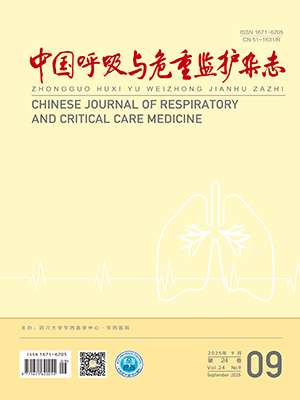Objective To explore the daytime variables which are predictive to nocturnal hyoxemia among COPD patients unqualified for long-term oxygen therapy ( LTOT) .
Methods Forty-eight stable COPD patients with SaO2≥90% were enrolled in this study and regarded as patients unqualified for LTOT. All patients underwent lung function examination during daytime. Their nocturnal oxygen saturation was monitored with overnight pulse oximetry ( OPO) .
Results Daytime oxygen saturation was positively correlated with nocturnal mean SaO2 ( r =0. 79, P lt;0. 0001) , and negatively correlated with time spend with saturation below 90% ( TB90) ( r = - 0. 75, P lt; 0. 0001) . No significant relationship was found between lung function parameters and nocturnal SaO2 . The patients with daytime oxygen saturation between 90% and 95% were more likely to have lower nocturnal oxygen saturation and longer TB90 ( P lt;0. 05) .
Conclusions Daytime oxygen saturation may effectively predict the occurrence of nocturnal hyoxemia in stable COPD patients unqualified for LTOT. To reduce COPD complications and improve prognosis, we suggest a relative indication of LTOT for patients with daytime oxygen saturation between 90% and 95% and with nocturnal hyoxemia.
Citation: WANG Yijia,TAO Lianqin,SHI Guochao,WAN Huanying,CAI Xiaoting,ZHU Haixing. Daytime Risk Factors of Nocturnal Hyoxemia in COPD Patients Unqualified for Long-term Oxygen Therapy. Chinese Journal of Respiratory and Critical Care Medicine, 2012, 11(4): 317-321. doi: Copy
Copyright © the editorial department of Chinese Journal of Respiratory and Critical Care Medicine of West China Medical Publisher. All rights reserved




